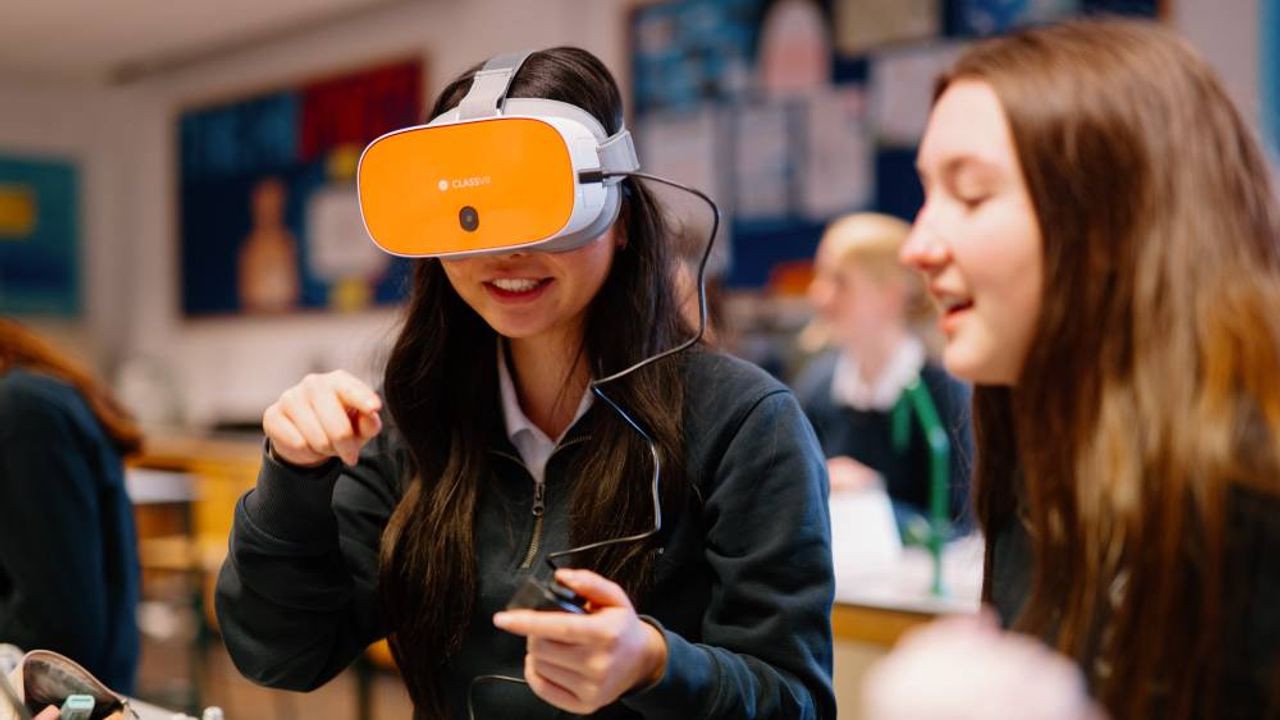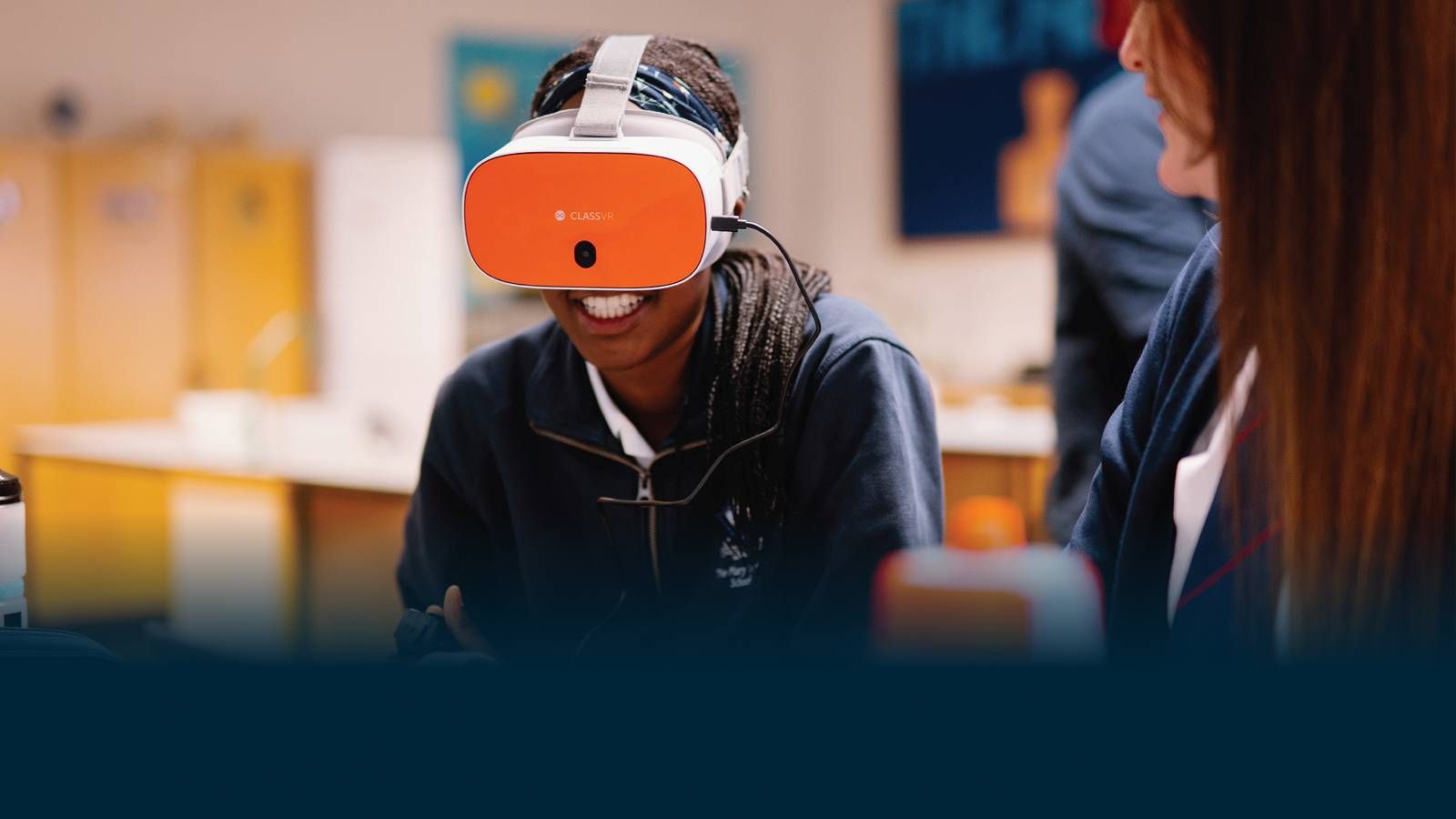
Virtual and Augmented Reality for High Schools
Boost Engagement, Increase Retention, and Improve Outcomes with ClassVR
VR in Education for Ages 11 to 16 Years
High schools are transforming learning through the power of virtual reality. With virtual reality in High School education, teachers can turn a single lesson into an unforgettable experience, helping students grasp complex topics, think critically, and retain knowledge longer.
Each classroom set supports up to 30 headsets, giving every learner the chance to explore at their own pace in a safe, structured environment under teacher guidance with vr in high school education. From analysing cell biology in 3D to stepping inside a Shakespearean play or modelling physics experiments, ClassVR provides ready-made resources that make abstract concepts tangible and lessons truly immersive.
Classroom Ready Headsets For High School Education
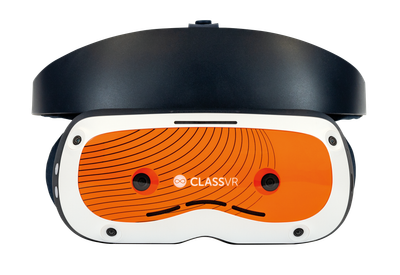
Xcelerate
Interactive VR for Career and Technical training – perfect for preparing students to take the next step.
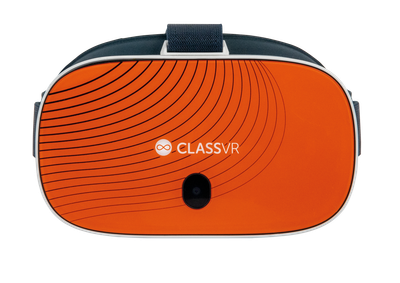
Xplorer
The solution for virtual and augmented reality learning, taking students beyond textbooks and into immersive worlds.
Case Studies of ClassVR for High Schools
/thumbnail.jpg)
Corley Academy
Discover how Corley Academy is using ClassVR to enhance learning for SEND students, creating more inclusive classrooms that build engagement, confidence, and social skills through immersive VR and AR.
.jpg)
Katherine Warington School
Learn how Katherine Warington School is using ClassVR to enhance engagement, support revision, and help students connect with topics in more memorable, immersive ways.
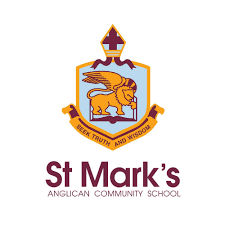
St Mark’s Anglican Community School
See how St Mark’s in Perth, Australia uses ClassVR across subjects to spark curiosity, support inquiry-based learning, and help students explore complex topics like the solar system in new, immersive ways.
How Virtual Reality Benefits Lessons
Take Any Student, Anywhere, at
Any Time
School trips are an essential part of the school year to help students experience culture, history, geography, and other topics within the curriculum. Now, imagine doing all that from the comfort, safety, and ease of the classroom.
Wth ClassVR, make the impossible possible, for students of all backgrounds. Take your class anywhere, any time, without the need for permission slips, high costs, or logistical nightmares.
Conceptual Subjects Made Simple
Theory-based conceptual subjects can often be difficult for students to visualise and comprehend, with teachers often using demonstrations and visual cues to boost engagement and knowledge retention.
With our AR cubes, students can bring theoretical subjects to life, far beyond static textbook images. They can explore and interact with 3D models, from human cells to entire planets, right in their hands.
Multi-Sensory Learning
Immersive your students in real-world environments and dynamic learning moments.
Using a variety of learning experiences such as visual, auditory, written, and hands-on activities, students can more effectively learn and retain key information during lessons.
Real Results: Enhancing Lessons with ClassVR

Spanish
High school students used ClassVR to explore Spanish landmarks and traditions while practising descriptive language.
/2776_main_1750762204.jpg?updatedAt=1755017617693)
Geography
Using Virtual Reality and 360 film, 3D printed and fossil coral specimens and related lessons, students were introduced to corals and reef ecosystems.
/2487_main_1750784404.jpg?updatedAt=1755031648483)
Biology
Biology students used ClassVR to explore a 360° animal cell and visualise organelles in action.
ClassVR in High Schools
A snapshot of immersive learning in action.
Transform Teaching with ClassVR in Every Subject
ClassVR supports deeper learning, critical thinking, and enquiry-based education. With access to hundreds of thousands of immersive resources, educators can enhance lessons across subjects, making complex concepts clearer and learning more impactful.
Want to Learn More?
Our friendly team is here to answer your questions, show you how the content works, and help you explore how ClassVR can fit into your teaching.
How ClassVR Benefits Learning
Compared to learners taught with more traditional teaching methods, learners using a VR headsets are:

4x
More Focused

4x
Quicker to Retain Knowledge

275%
More Confident in Applying Learnings
*source: PWC
Frequently Asked Questions
What is the difference between VR and AR?
Virtual Reality and Augmented Reality are closely related but have different purposes.
Virtual Reality places you inside a fully immersive digital environment. With VR, your senses make you feel as if you’ve been transported somewhere else entirely.
Augmented Reality, on the other hand, blends the physical and digital worlds by overlaying computer-generated content onto what you see around you.
At ClassVR, our headsets combine both technologies. The built-in camera and 3D models let you experience AR by holding a digital object in your hand and exploring it up close, all while staying aware of your surroundings. At the same time, our VR experiences take you on immersive journeys to new destinations, from visiting different planets to exploring under the sea.
Why use VR/AR in high schools?
VR/AR in high schools enhances learning by making lessons immersive, interactive, and engaging. It helps students understand complex concepts, experience subjects first hand, and develop critical skills like problem-solving and collaboration.
How can VR and AR support learning in high schools?
VR and AR support learning in high schools by:
Offering safe, repeatable practice: Virtual labs, simulations, and scenarios allow practice without real-world risks.
Making abstract concepts concrete: Students can visualise complex ideas in science, math, and engineering.
Enhancing engagement: Immersive experiences capture attention and increase motivation.
Providing experiential learning: Students can explore historical events, ecosystems, or literary settings firsthand.
Encouraging collaboration and problem-solving: Many VR/AR activities involve teamwork and critical thinking.
What subjects can benefit most from VR/AR?
At ClassVR we offer hundreds of thousands of VR resources for subjects across the curriculum. See our content by subject HERE.
Here are some ideas on how to use ClassVR for high school subjects:
Science: use augmented reality to hold scientific models at the palm of their hands, travel to the moon, navigate around the human body..
History/Geography: Virtual field trips, visit ruins, lakes, oceans, and mountains, and travel back in time to ancient Egypt or the American Revolution.
Art: Visit galleries in the modern world, hold famous sculptures and statues in the palm of your hand.
Literature: Explore immersive storytelling and navigate through the books you’re reading in class, from Alice in Wonderland to Macbeth.
Our 50 ways to use ClassVR offers insightful guide on integrating Virtual Reality into the classroom.
How do VR and AR help students with SEND?
Virtual Reality is a powerful tool for supporting SEND learners when used within the education sector. Virtual Reality allows SEND students to learn and explore new situations within a safe controlled environment helping reducing anxiety about exploring new placing and increasing confidence in handling immersive tasks.
VR offers a new approach to learning that goes beyond a textbook, with its ability to drive a multisensory learning experience that allows for sight, sound, and movement to become engaging within lessons, making abstract concepts more concrete.
For students with sensory processing needs, VR can provide calming, structured environments that help regulate emotions before returning to classroom learning. To find our more, check out our blog on SEND learning: https://www.classvr.com/resource-hub/supporting-additional-educational-needs-with-vr/
